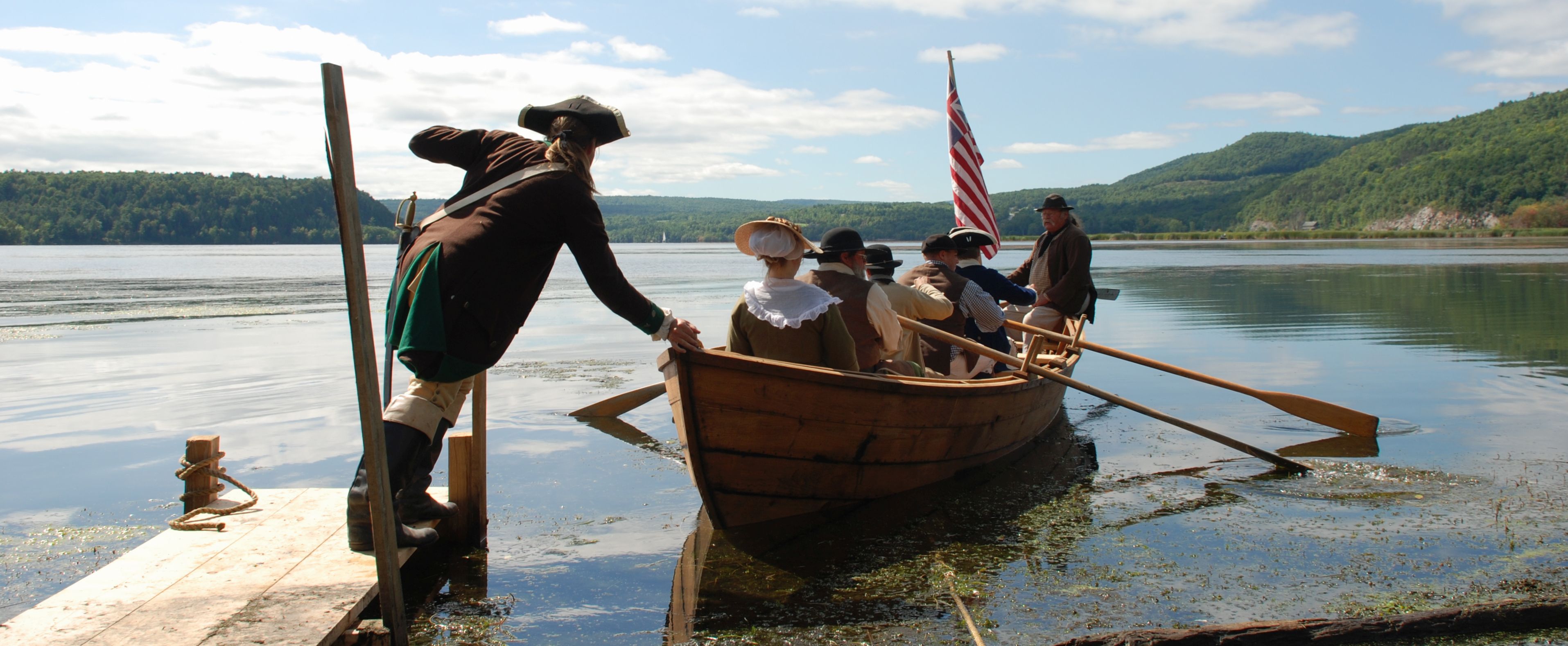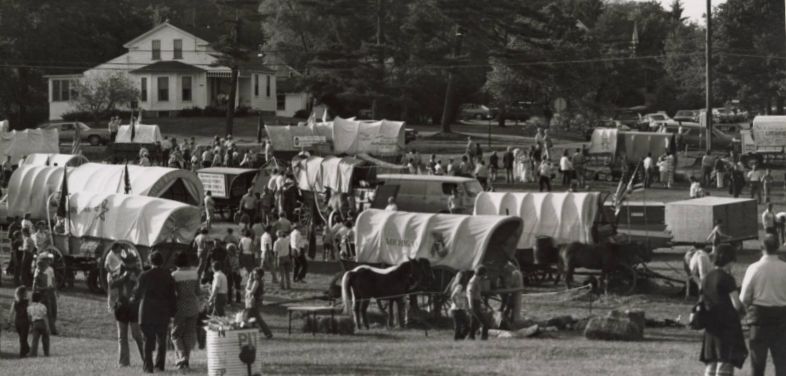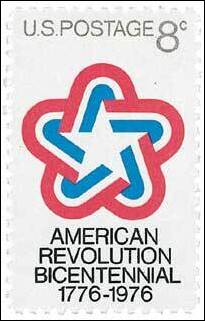Communities around the U.S. hope that the nation's upcoming 250th anniversary will inspire Americans to appreciate the importance of shared experience and preserving history.
-
Summer 2023
Volume68Issue4

The coming of America’s bicentennial in 1976 inspired thousands of citizens to get involved in the work of local history. Collecting, recording, displaying, and recounting the stories of institutions, neighborhoods, and families was a way for people to celebrate America’s history on the scale at which they tend to experience it — the local level.
In my hometown of Puyallup, Washington, a group of local history enthusiasts set to work on collecting community records. When it was complete, the Pacemakers Project was a multi-volume, bound treasure trove of historical information, including biographical sketches of pioneers, business leaders, politicians, and educators, plus short oral histories by an array of local residents.
In preparing such a record for the bicentennial celebration, Puyallup was far from unique. In her book On Doing Local History, Carol Kammen writes that “the national celebration of the bicentennial took place, in its most meaningful form, in America’s hometowns. Just as during the period of the centennial celebration in 1876, the bicentennial stressed our hometown heritage, and with it came an outpouring of interest in local history.”
Though initial federal-government planning for the bicentennial was centralized, the actual commemoration was highly decentralized. In addition to major events in America’s founding cities like Philadelphia and Boston, and a massive marketing campaign to sell merchandise related to America’s 200th birthday, citizens assembled in thousands of localized expressions of the bicentennial celebration. “Citizens participated heavily in community events, public art initiatives, community-improvement projects, and historical projects in churches, schools, museums, and historical sites,” writes historian Tammy Gordon.
As the 200th anniversary approached, more and more citizens took on projects to celebrate their local and institutional histories. According to the American University professor M.J. Rymsza-Pawlowska, “the bicentennial stoked new excitement in all kinds of histories: family histories, house histories, and community histories. The majority of grassroots bicentennial projects were hyper-local; they spoke to the experiences and needs of their own immediate communities.” Printed material on local history, from regular newspaper columns to books, proliferated around the time of the 200th.
Professional historians took an active role in a variety of civic projects, while amateur local historians volunteered their time and talents in an array of special projects. Federal grants administered by the American Revolution Bicentennial Administration underwrote local initiatives ranging from oral histories to park improvements, and from art exhibitions and public murals to historic-preservation projects.

U.S. News and World Report noted in 1975 that “tens of thousands of Americans are now actively working on festivities — from regional fairs to neighborhood histories." While pomp and circumstance related to the summer festivities in 1976 arrived with much fanfare, the lasting impacts were quieter, but more closely tied to public appreciation for history. The columnist Ellen Goodman described this phenomenon in Boston, in an article for Ms. magazine: “By fall, the buy-centennial burgers and red, white, and blue ice cream bars had come and gone. But now, we have more trees, an expanded Afro-American museum, a renovated nineteenth-century marketplace, a water fountain here, and a historical marker there.” All told, the ARBA’s database noted 3,600 historic preservation projects.
In local museums, bicentennial exhibits “focused on the community’s founding moments, its local cultural character, or connections to the American Revolution,” according to Gordon. Libraries collected and restored historical documents. They also developed programs to assist people with genealogical research. Americans’ interest in their ancestry was on the rise in the bicentennial era and expanded with the 1977 ABC television miniseries Roots, which traced the story of a fictional African-American family through the generations.
The histories of particular places and families became points of connection to the larger story of the nation. In a 1973 study of local bicentennial activities, the Wittenberg University teacher Robert Hartje wrote, “It is in the context of the community that most people seek fulfillment. It is at home that they find the best prospects for an understanding of their own historical tradition. Local historians deal with the individual where he or she is—in a tenement, farmhouse, mansion, apartment, or suburban ranch house. By the study and preservation of local heritages within the larger contexts of national and international change, local historians may be able to broaden participation in bicentennial activities so as to include the most disparate of groups.”
Preparing for America 250

Fast-forward nearly half a century as the nation begins preparations for the semi-quincentennial—the 250th anniversary of American independence—in 2026. According to the U.S. Semi-quincentennial Commission website, “The commemoration period began in 2020, culminates on July 4, 2026, and officially concludes in 2027.” States have formed their own commissions to recognize America’s 250th, and heritage sites, museums, and historical societies are laying the groundwork for their parts in the anniversary.
New Jersey Historical Commission Executive Director Sarah Cureton describes listening sessions held with New Jersey residents in preparation for the 250th. “While national attention may be focused on sites directly related to the events of the American Revolution, we’ve been reminded that our fellow citizens are often much more interested in the historic sites in their hometowns. Communities both old and new described the deep meanings that people ascribe to where they live, reflecting on the power of memories and shared experiences as they relate to place.”
Historians and heritage practitioners need to capitalize on the abundant opportunities to capture and share their hometown stories during this seven-year stretch. As the bicentennial was an occasion to record the memories and reflections of men and women who had survived the First World War and the Flu Pandemic of 1918, America 250 should prompt us to mark the local histories of those who experienced the Civil Rights Movement, the wars in Korea and Vietnam, and the transformative effect of global economic power on local communities.
We should take up the local stories of women, people of color, and religious groups whose histories were marginalized or even excluded from the official records of the past. Fortunately, we are not the first generation to whom it has occurred to make our historical records more inclusive. These considerations were prominent in the activities of the American bicentennial. It is right that we emphasize the need for historical accounts that are reflective of the diversity within our communities.
The records of our institutions deserve attention all their own, too. We should consider the shaping of civil society by nonprofit organizations, the local roots of big businesses, and the enduring presence of small businesses, schools, and houses of worship. In our digital era, we need to find new and innovative ways to preserve and expand archives.
And we should be intentional not only in making and keeping the records of the past, but in sparking an historical imagination about the communities of which we are part. This is important not just for the sake of honoring those who came before, but to make our way in the present and for people in the future. In an era afflicted by mass loneliness, everyone wants to belong. By helping people understand their places better, and recovering this historical imagination, we can rebuild the communities that are so vital to the health of our country.
The Urgency of Local History
There is particular urgency in the work of recording local histories. For one thing, we have witnessed the steep decline of local newspapers, and the corresponding means to preserve a record and continuity. Many of the very social forces that shaped our history also changed the nature of its transmission - from the decline of folkways by which oral traditions were once passed, to the incredible mobility of our population—uprooting, re-rooting, and sometimes returning—to the replacement of written records with electronic ones.

So, we must find new means to preserve old memories. The local history outfit, Arcadia Publishing, is helping to do this at scale. And social media allows for the easy and widespread sharing of local history information, photos, and event announcements.
But knowing that newspapers once had a more reliable presence in local communities, we cannot count on media archives to provide a complete historical record. The press archives of the 1960s and 1970s are woefully inadequate when it comes to the experiences of veterans who served in Vietnam. Or consider the loss of old residential neighborhoods due to commercial development or highway projects. Rarely were the narratives of these places captured in their final days. Consider as well the rise of institutions or the emergence of trends whose significance is only apparent in retrospect—the once-small business that came to shape an entire regional economy, the little girl who grew up in a broken home and grew up to put the town on the map, or the enduring symbols of a place—mascots, agricultural products, old houses—that merit a rich catalog of stories all their own.
Above all, history needs to recognize people, especially the ones who tend to live quietly and make worlds of difference. In a world of celebrity gossip and social media furor, we exalt fame, we value growth, and we reward scale. But those superficialities can distort our sense of reality if we’re not careful. If we’re paying attention to what really matters, we will go out of our way to document the memories of the citizens whose quieter lives have kept alive an experiment in self-government.
This brings us full circle to the occasion that served as a reminder to the people of the 1970s that the history of their communities was worth conserving. It was the anniversary of a founding that, at its heart, is about the fact that people matter.
Whatever else has changed since 1976, the dignity and potential of people is a constant, and it remains as ever the animating truth of the American promise. That being the case, we should do what is in us to recount the lives of people and to document the ways in which they have made their difference, in every American place.
Hans Zeiger is president of the Jack Miller Center (www.jackmillercenter.org), a nationwide network of scholars and teachers who are committed to advancing the core texts and ideas of the American political tradition.

